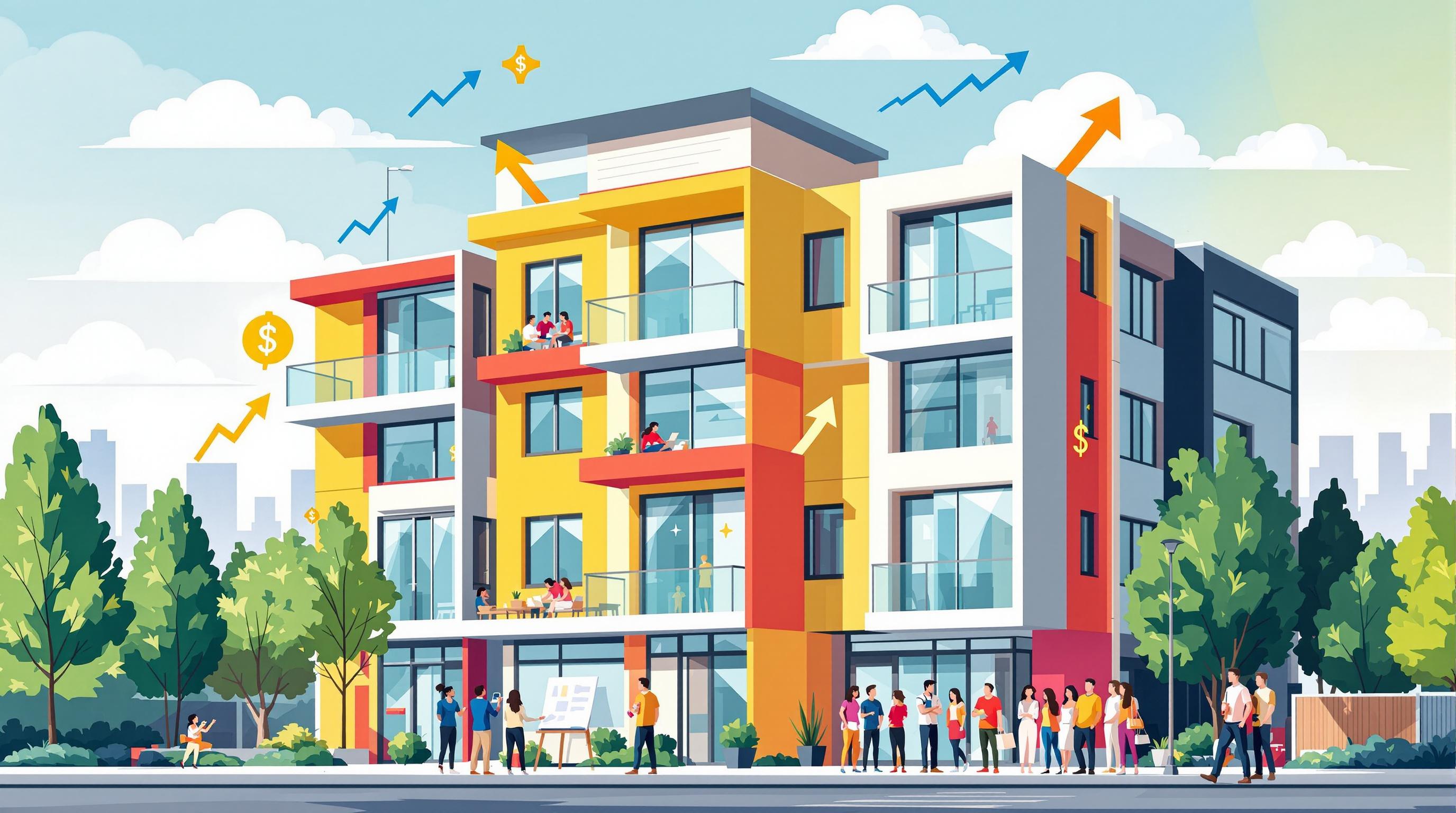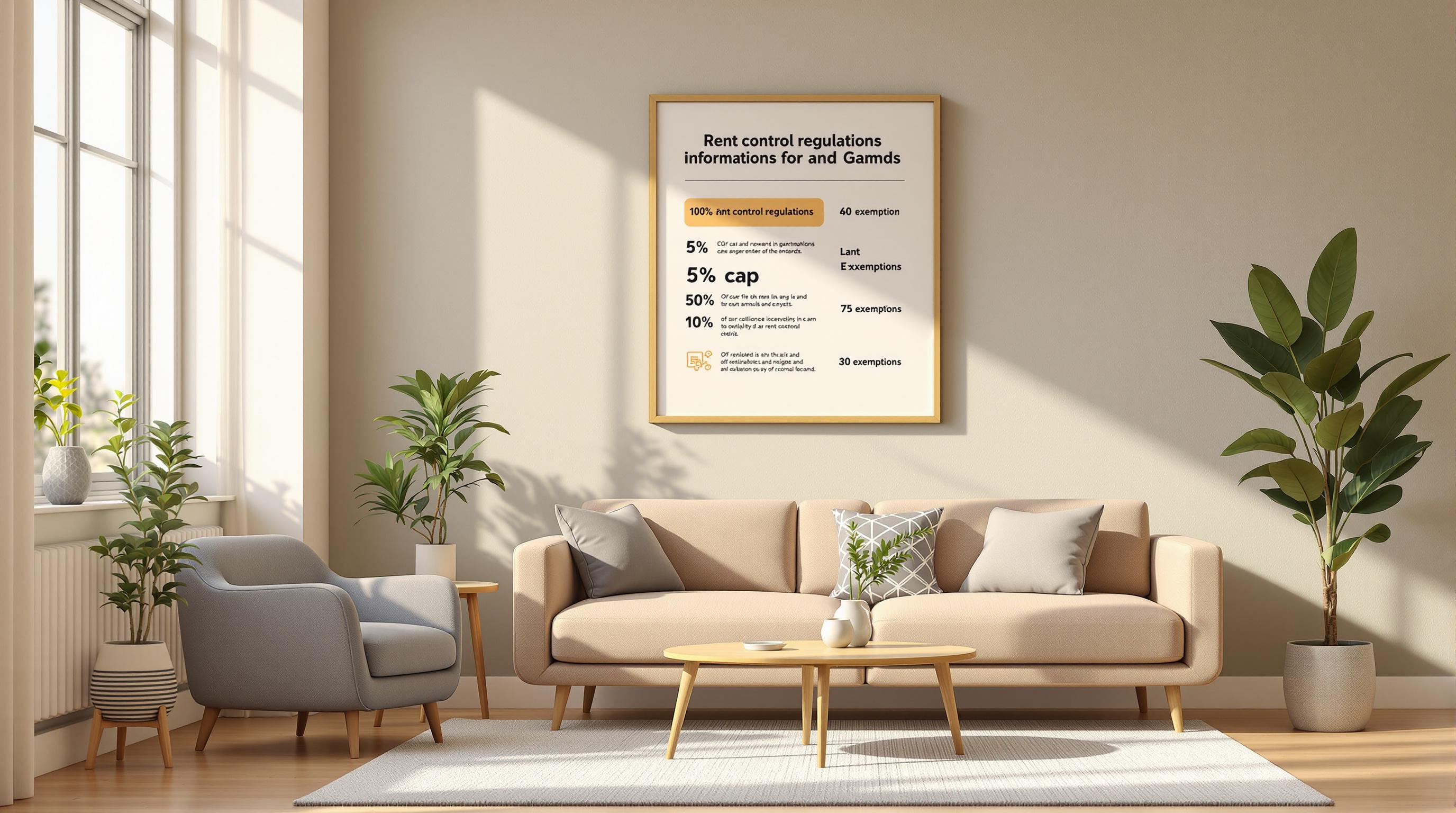HST rebates can significantly reduce construction costs for rental projects. The Canadian government introduced the Purpose-Built Rental Housing Rebate (PBRHR) on September 13, 2023, offering a 100% rebate on the GST/federal portion for qualifying purpose-built rental developments. Here's a quick overview:
-
PBRHR Highlights:
- 100% GST rebate (no cap) for eligible projects.
- No property value limits.
- Applies to new builds or conversions with 4+ apartments or 10+ residential units.
- Construction must start by December 31, 2030, and finish by December 31, 2035.
- At least 90% of units must be for long-term rental.
-
NRRP (New Residential Rental Property Rebate):
- Covers 36% of GST (capped at $6,300/unit).
- Phases out for properties priced above $350,000.
- Includes single-unit rentals and major renovations.
Quick Comparison
| Feature | PBRHR | NRRP |
|---|---|---|
| Rebate Amount | 100% of GST (no limit) | 36% of GST (up to $6,300/unit) |
| Property Value Limit | No cap | Phases out above $350,000 |
| Eligible Properties | New purpose-built rentals | New or renovated rentals |
| Minimum Units | 4+ apartments or 10+ rooms | No minimum |
| Timeline | Start by 12/31/2030, finish by 12/31/2035 | No specific timeline |
If you're developing large-scale rental projects, the PBRHR offers better financial benefits. For smaller projects or renovations, the NRRP may be a suitable option.
Full GST Rebate for New Rentals: What The New Changes Mean
HST Rebate Basics
Canada's HST rebate policies are now more focused on supporting the growing rental market, especially with the country's increasing population. These updated guidelines provide clearer financial benefits for developers. Here's a breakdown of the main eligibility criteria for each rebate program:
| Requirement | NRRP (Standard) | PBRHR (Enhanced) |
|---|---|---|
| Minimum Units | No minimum | 4+ apartments or 10+ private rooms |
| Long-term Rental | At least 90% of units must be for long-term rental | At least 90% of units must be for long-term rental |
| Property Types | New or significantly renovated rental properties | New builds or conversions of non-residential buildings |
| Construction Timeline | No specific timeline | Must start by Dec 31, 2030, and finish by Dec 31, 2035 |
| Value Limits | Rebate phases out for units priced between $350,000 and $450,000 | No price limits |
The enhanced PBRHR program sets stricter requirements for large-scale projects. Each unit must include a private kitchen, bathroom, and living area. However, properties like condominiums, single-family homes, duplexes/triplexes, houses on leased land, and major renovations are excluded from eligibility [2][5].
Take the Maison Riverain development in Ottawa as an example. Its first building is expected to open in early 2025, with future phases benefiting from the enhanced rebate program. This initiative is projected to reduce costs and contribute to the creation of about 1,100 rental units [6].
In provinces like Ontario, Nova Scotia, and Newfoundland and Labrador, the provincial portion of the rebate covers 100%, while Prince Edward Island applies specific caps per unit and reduced rates after 2028 [5].
Recent data highlights a shift toward purpose-built rentals, which made up 35% of housing completions in major Canadian cities last year. This trend positions developers to take advantage of the enhanced rebate program [6].
1. PBRHR: Purpose-Built Rental Housing Rebate
The Purpose-Built Rental Housing Rebate (PBRHR) is designed to encourage rental housing development by offering a 100% rebate on the GST and the federal portion of HST for qualifying projects [5].
One standout feature of the PBRHR is that it removes the value limits that typically apply to other rebates. For example, unlike the standard NRRP program, there’s no $450,000 fair market value cap on individual units [5]. However, to qualify, projects need to meet specific criteria.
Qualification Criteria
Projects must satisfy these key requirements:
- Timeline: Construction must start before January 1, 2031, and be completed by December 31, 2035 [1].
- Property Type: Eligible properties must have:
- At least 4 residential units with private facilities (kitchen, bathroom, and living area), or
- A minimum of 10 private rooms or suites [5].
- Rental Use: At least 90% of the units must be reserved for long-term rental as primary residences [1].
Provincial Variations
The rebate terms vary slightly by province. Here’s a quick breakdown:
| Province | Provincial HST Rebate | Special Conditions |
|---|---|---|
| Ontario | 100% | No value limits |
| Nova Scotia | 100% | No value limits |
| Newfoundland and Labrador | 100% | No value limits |
| Prince Edward Island | 100% | $35,000 cap per unit; reduced rates after 2028 [1] |
Ineligible Properties
To focus on larger rental developments, certain property types are excluded from the program. These include:
- Condominiums
- Single-unit houses
- Duplexes and triplexes
- Houses on leased land
- Substantial renovations of existing rental complexes [3]
However, the program does allow for converting non-residential buildings, such as offices, into rental complexes [5].
Construction Start Date
For the purposes of this rebate, construction officially begins when excavation work starts [1].
sbb-itb-16b8a48
2. NRRP: New Residential Rental Property Rebate
The NRRP rebate helps recover 36% of the GST or federal HST on eligible rental properties. It's designed to support real estate investors focusing on long-term rental housing.
Key Details
There are specific value limits tied to the NRRP rebate:
- Maximum rebate: $6,300 per unit
- A phased reduction applies to units priced between $350,000 and $450,000
- Units over $450,000 do not qualify for the rebate [3]
Eligibility Criteria
To qualify for the NRRP rebate, properties must meet these requirements:
- The property must be newly built or significantly renovated.
- The first tenant must occupy the unit as their primary residence.
- The unit must be intended for long-term rental (short-term rentals are excluded).
- The property's value must be below $450,000 at the time the tax was paid [4].
Special Rules in Ontario
In Ontario, even if the property exceeds the $450,000 federal threshold, investors can still claim the provincial HST rebate. This makes it an appealing option for those investing in Ontario's higher-priced markets [4].
Required Documentation
Proper documentation is crucial for a successful rebate claim. Here's what you'll need:
| Document Type | Purpose | Retention Period |
|---|---|---|
| Purchase Agreement | Verifies GST/HST payment | 6 years |
| Lease Agreement | Confirms intent for long-term rental | 6 years |
| Occupancy Records | Proves primary residence use | 6 years |
| GST/HST Payment Proof | Shows tax payment details | 6 years |
Critical Deadlines
You must submit your rebate claim within two years of one of the following events:
- The purchase date
- Completion of substantial construction
- Conversion of the property to a long-term rental [7]
Repayment Obligations
Be aware that the rebate must be repaid if:
- The unit is sold within a year of its first occupancy.
- The buyer does not intend to use the unit as their primary residence.
- The property is not used as planned for long-term rental purposes [4].
"The GST/HST New Residential Rental Property (NRRP) rebate is a tax-saving tool for real estate investors in Canada who purchase or construct new residential rental properties." - Think Accounting [7]
Rebate Comparison
This section breaks down how the PBRHR and NRRP rebate programs can help manage construction costs. Below, you'll find a side-by-side comparison of the key features and differences between these programs.
Financial Benefits
| Feature | PBRHR | NRRP |
|---|---|---|
| Rebate Percentage | Covers 100% of the federal GST/HST | Up to 36% of the federal GST/HST |
| Value Limitations | No fair market value restrictions | Phases out above $350,000; not available for units over $450,000 |
| Maximum Rebate | No limit | Capped at $6,300 per unit |
| Provincial Benefits | Full provincial HST rebate in ON, NS, and NL | Varies depending on the province |
Eligibility Requirements
| Requirement | PBRHR | NRRP |
|---|---|---|
| Minimum Units | Applies to multi-unit complexes with at least 4 apartments or 10 private rooms | Covers single units and larger |
| Rental Commitment | Requires at least 90% of units to be rented long-term | First tenant must use the unit as their primary residence |
| Project Scope | Limited to new builds and conversions | Includes substantial renovations as well |
Provincial Variations
Each province has its own rules that can affect both rebate amounts and eligibility. For a detailed breakdown of these provincial differences, refer to the HST Rebate Basics section.
Impact on Investment Strategy
The distinctions between these programs play a big role in shaping investment decisions. For example, Dream Unlimited Corp. chose to build 5,000 purpose-built rentals in cities like Toronto, Ottawa, Calgary, and Saskatchewan, influenced by the PBRHR's removal of GST on new purpose-built rental housing [8].
Professional Guidance
"As always, the devil is in the details, and property owners and builders planning to use these programs would likely benefit from legal advice." – Millar Kreklewetz LLP [9]
Application Process
The PBRHR is designed with a simpler application process and offers higher rebate percentages for larger developments. On the other hand, the NRRP is better suited for projects that fall outside the PBRHR's criteria.
Next Steps
To make the most of the rebate comparisons outlined earlier, follow these practical steps to secure your HST benefits efficiently:
Check Your Project Timeline
Your project must begin between September 13, 2023, and December 31, 2030, and be completed no later than December 31, 2035.
Review Your Property Details
-
For Large Multi-Unit Projects:
Developments with four or more stand-alone apartments or ten or more residential units could qualify for the enhanced GST/HST rental rebate. This effectively removes the tax on eligible units. -
For Smaller Developments:
If you're working on single-unit rentals, duplexes, triplexes, or major renovation projects, the NRRP might be a better fit - especially for properties valued under $350,000.
Gather Required Documentation
Prepare key documents such as your construction timeline, floor plans, rental agreements, and market value assessments. These details are critical and were discussed in earlier sections.
Seek Professional Guidance
Before submitting your application:
- Consult a Tax Specialist: Ensure your application complies with legal requirements and use the GST524 form to complete the process.
- For Nova Scotia Projects: If you're managing smaller multi-unit developments, consider reaching out to experts like Helio Urban Development (heliourbandevelopment.com) for tailored advice on construction and financing.
Note: Properties that don't qualify for the rebate will still fall under NRRP guidelines.
For additional details on eligibility, refer back to earlier sections.
Related Blog Posts
- 8 Government Incentives for Property Investors in Nova Scotia
- Vacation Rental Laws in Halifax, Nova Scotia: Short-Term vs. Long-Term Investment Prospects
- A Landlord’s Guide to Rent Control in Nova Scotia: Key Rules & Opportunities
- Taxation & Capital Gains Strategies for real estate investor in Nova Scotia



